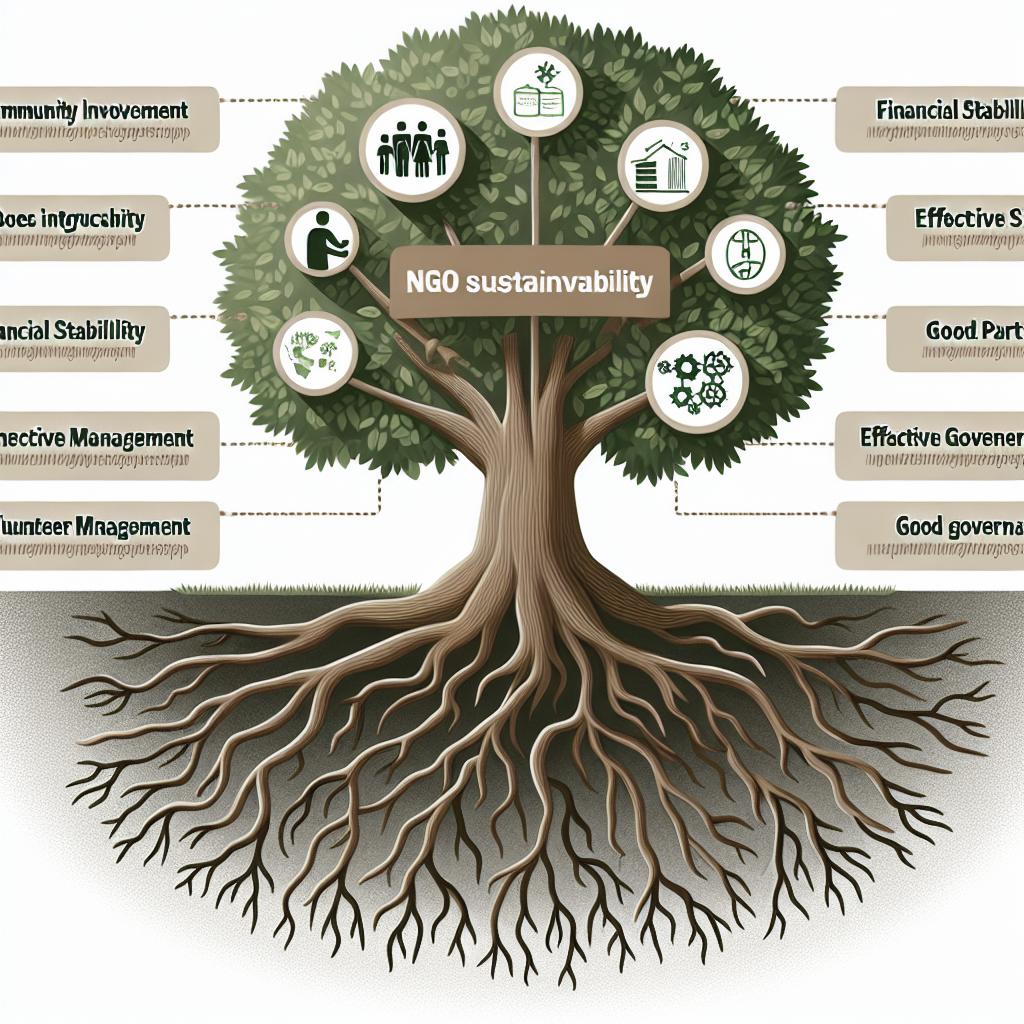“`html
Key Strategies for NGO Sustainability
Non-Governmental Organizations (NGOs) serve critical roles in society, often stepping in where government resources fall short. Yet, ensuring their sustainability can be an ongoing challenge. This blog post delves into the essential strategies that NGOs can adopt to thrive in the long term. From establishing a strong organizational structure to understanding and complying with legal requirements for funding, preparing annual reports, and leveraging social media, there are multiple facets to consider. Additionally, advocating for initiatives, building an internal corpus through individual donations, and creating self-sustainable projects will further contribute to the stability and growth of an NGO.
1. Establish a Strong Structure for Your NGO
To ensure sustainability, NGOs must develop a robust organizational structure. This entails creating a clear mission and vision that guide all activities and decisions. A well-defined governance structure is critical, with experienced board members or trustees providing oversight and strategic direction. Clear roles and responsibilities within the team further enhance operational efficiency.
Financial stability is another foundational element of this structure. Developing a comprehensive business plan that includes diverse funding sources can reduce the dependence on single donors and protect the NGO from financial uncertainties. In addition, cultivating partnerships and networks within the sector can provide additional support and opportunities for collaboration.
2. Understand and Comply with Section 135 of the Companies Act for CSR Funding
Corporate Social Responsibility (CSR) funding is an important financial resource for NGOs in many countries. For NGOs in India, understanding Section 135 of the Companies Act is crucial. This section mandates that companies meeting certain criteria allocate a portion of their profits to CSR activities, representing a potential funding avenue for NGOs involved in relevant causes.
Compliance with Section 135 involves meeting specific criteria and adhering to reporting standards. NGOs should ensure transparency in their operations and financial management to build trust with corporations looking to invest in social causes. Establishing a dedicated team to handle CSR-related activities can streamline the process of securing and maintaining these funds.
3. Prepare and Publish Annual Reports
Transparency and accountability are key components of building trust with stakeholders. Publishing annual reports is an effective way for NGOs to communicate their achievements, challenges, and financial status. These reports offer a comprehensive overview of activities conducted over the year and demonstrate the NGO’s impact on the community.
Annual reports should include detailed financial statements, program outcomes, and narratives that highlight the organization’s successes and lessons learned. By consistently sharing this information, NGOs can establish credibility and encourage ongoing support from donors, partners, and the general public.
4. Develop a Strong Social Media Presence
In today’s digital age, a strong social media presence is vital for NGOs aiming to increase their reach and engage with a broader audience. Social media platforms provide cost-effective channels for storytelling, awareness campaigns, and fundraising efforts. NGOs should develop a coherent social media strategy that aligns with their mission and engages their target audience effectively.
Content creation is critical in maintaining an active online presence. By sharing impactful stories, updates on projects, and calls to action, NGOs can build a community of supporters and advocates. Additionally, leveraging data analytics can help NGOs refine their strategies by understanding audience preferences and behavior.
5. Advocate for Your Initiatives
Advocacy is a powerful tool for NGOs to promote change and influence public policy. By engaging in advocacy activities, NGOs can raise awareness about their causes, garner public and governmental support, and drive legislative or social changes that align with their mission.
Collaboration with other organizations and stakeholders can amplify advocacy efforts. Partnerships can offer shared resources, expertise, and platforms to reach a wider audience. Consistent messaging and strategic communication are essential to effective advocacy, ensuring that the NGO’s voice is heard and its objectives are met.
6. Build an Internal Corpus Through Individual Donations
While securing large grants and corporate donations is important, building an internal corpus through individual contributions can offer financial stability for NGOs. Developing a comprehensive individual giving program can create a steady revenue stream, ensuring funds are available for both operational costs and crisis situations.
To encourage individual donations, NGOs must cultivate strong relationships with their supporters, conveying the impact of their contributions. Regular communication, expressions of gratitude, and opportunities for donor involvement can strengthen these relationships. Innovative fundraising campaigns and platforms can further enhance donor engagement and retention.
7. Make Projects Sustainable on Their Own
Ensuring that projects are sustainable in themselves is critical. This involves designing programs that can maintain their operations and impact without constant external input. By empowering beneficiaries and local communities through skills training and capacity building, NGOs can foster self-reliance and reduce dependency.
Developing social enterprises linked to NGO projects is another strategy for sustainability, as they can generate revenue and contribute to the project’s continuous growth. Regular assessment and adaptation of projects to meet evolving needs and challenges will also enhance their longevity and relevance.
Next Steps
| Strategy | Description |
|---|---|
| Establish a Strong Structure | Develop a clear mission and governance system, establish financial stability, and engage in sector partnerships. |
| Comply with Section 135 for CSR Funding | Understand and adhere to legal requirements for CSR to access potential corporate funding. |
| Prepare Annual Reports | Publish transparent and comprehensive reports to build stakeholder trust and support. |
| Develop Social Media Presence | Utilize digital platforms for storytelling, campaigns, and community engagement. |
| Advocate for Initiatives | Use advocacy to promote change, build awareness, and drive policy adjustments. |
| Build Internal Corpus | Create a donor-friendly environment to secure individual contributions and build financial resilience. |
| Make Projects Sustainable | Design self-sustaining projects through community empowerment and social enterprise models. |
“`


